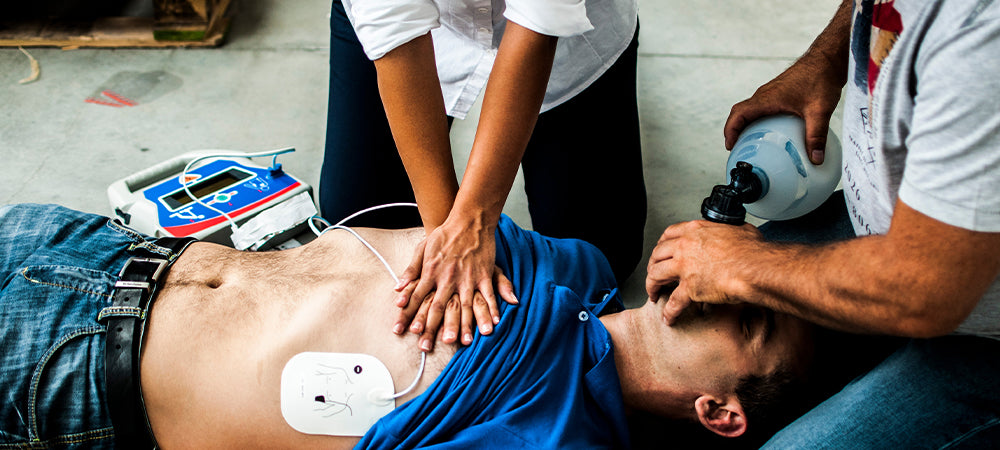Defibrillators & AEDs

What is a defibrillator?
A defibrillator or defib is another name for an automated external defibrillator or AED for short. A defibrillator is the most effective care for a casualty who is experiencing a Sudden Cardiac Arrest (SCA). Without the use of an AED around 95% of sudden cardiac arrests result in death.
What is Sudden Cardiac Arrest or SCA?
A sudden cardiac arrest is a medical condition that causes the heart to stop suddenly. This is not the same as a heart attack. During a cardiac arrest the heart stops, this causes blood to stop flowing to the brain and other vital organs. Without immediate treated death occurs within minutes. Sadly this medical conditrion does not discriminate and can happen to anyone of any age at any time.
A cardiac arrest can happen without warning, and stops the body from being able to move oxygen throughout your body. When your heart stops beating, chaotic impulses travel through the cardiac muscle. These irregular signals prevent oxygen-rich blood from circulating to vital organs and brain function. Sudden Cardiac Arrest is a life-threatening condition that can lead to death in minutes unless it's treated promptly.
The most definitve treatment for cardiac arrest is the use of an AED within 3 - 5 minutes of collapse. This time frame is crucial to increase the chances of survival. Thankfully AEDs are easy enough to use in any setting - they will instantly assess whether or not there's an issue with your heart then deliver life-saving therapy when needed. An automated external defibrillator (AED) helps those experiencing sudden cardiac arrest by analyzing their normal rhythm before delivering what’s called a "defibrillation".
How do defibrillators (AEDs) work?
The AED’s function by taking an EKG/ECG of the victim's heart to analyze electrical activity in attempt determine if he or she is having VF beats. If their analysis indicates that this may be happening, then a shock could deliver according-to instructions from device operator and locally installed programs available at hospitals around town for situations like these - but only when nothing else works!
Where To Place AED Pads
The pads of an AED will go around the heart and be placed on either side below your collar bone, just above where you would wear a bra. The electricity delivered by these machines can travel both up from them as well as down towards its two metal prongs that are attached near our armpits!
Deliver The Shock
When operating an AED, always listen to its instructions. If you touch or move a victim during analysis, it could interrupt the analysis and cause false positives for ventricular fibrillation - which would lead directly into delivering shocks when really shouldn't be doing so! Make sure no one else does either by loudly you are about to use the AED while looking around yourself thoroughly before turning on any devices. This is just in case there were still people who may have got too close while you were applying the pads. The electricity delivered by an AED during a shock stuns the heart in order to stop its abnormal rhythm, so making sure people are clear is crucial.
An AED does NOT…
The AED does NOT restart a heart or fix a flat line, this is just theatrics that you often see on TV show or in the movies An AED checks and monitors for electrical activity in the heart. If the AED does not detect any electrical activity, which would be flat line, then this represents clinical death. Recovery from a flat line is rare so an advised shock wouldn't help much even though you were told not give one!
What Might Happen After A Victim Is Shocked
When a shock is delivered to the victim, they may convulse. This is normal as electricity enters their body and it becomes charged with an AED placed thereon-never remove pads from chest until instructed by trained healthcare professionals if victim wakes up again after recovering.

